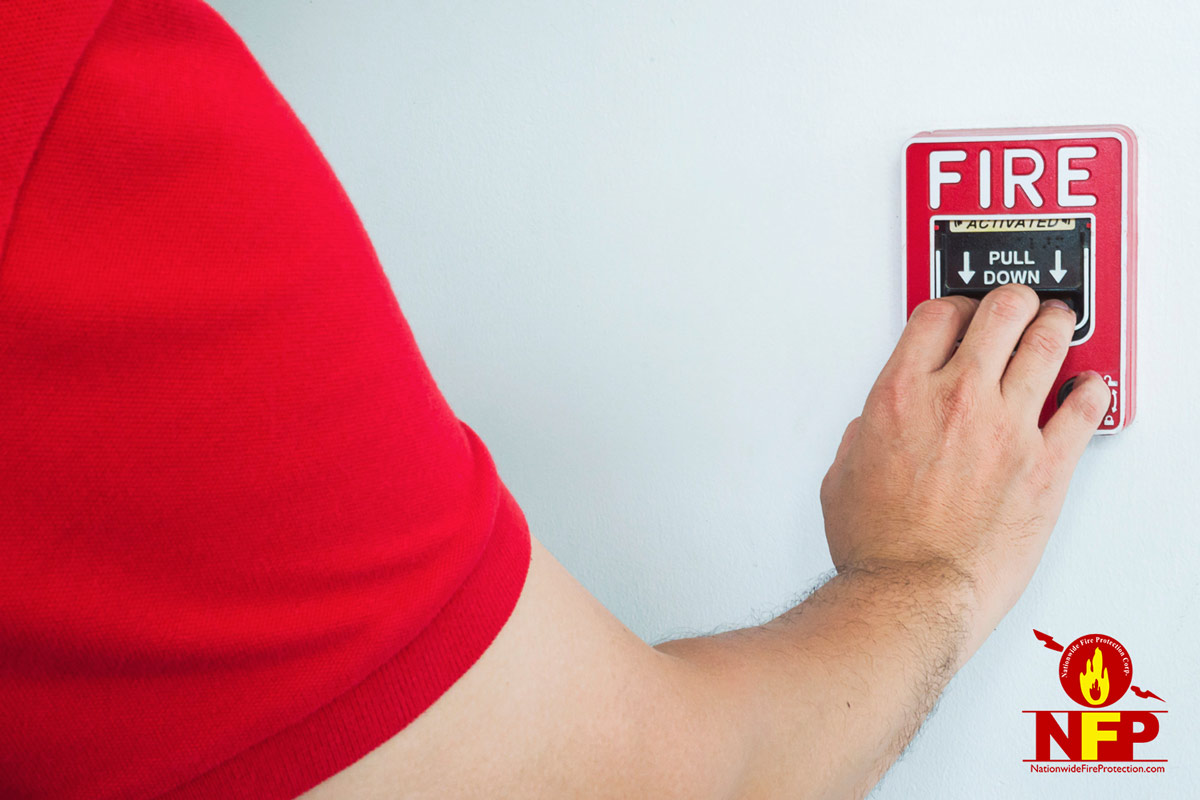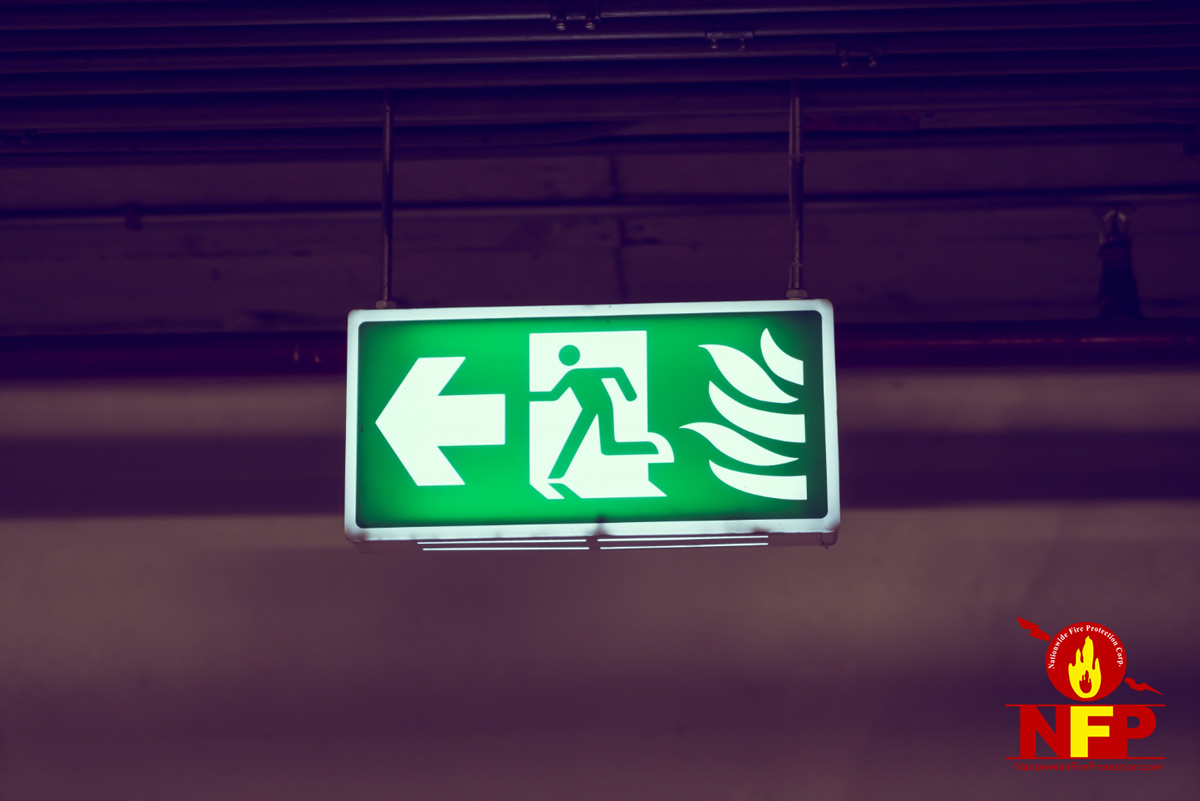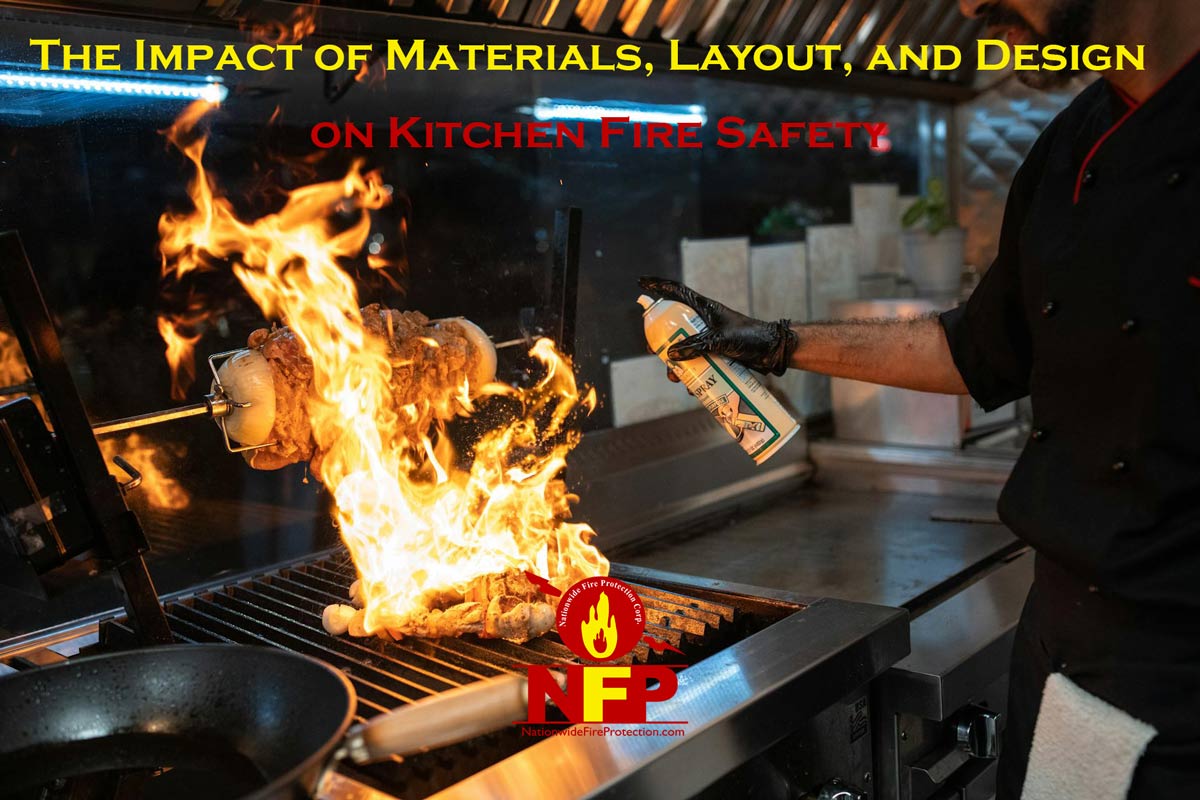Commercial kitchen materials, layout, and design can significantly ensure kitchen fire safety and prevent potential fire hazards.
Choosing the right equipment, arranging things smartly, and having a suitable design can help to keep your commercial kitchen safe and reduce the risk of fires.
Using proper fire-resistant materials, strategically placing the cooking equipment, and using efficient ventilation systems are essential to enhance kitchen fire safety.
In this article, we will go through the details to understand the impact of these elements on the safety of your staff, customers, and property.
Let us guarantee the safety of your
commercial kitchen
in Denver, CO. Call (800)750-7313 for a free
quote.
Kitchen Materials and Appliances for Fire Safety and Prevention
When setting up a restaurant with kitchen fire safety measures in mind, several key factors must be considered. Here are some recommendations for commercial restaurant equipment to keep in mind:
1- Fire-Resistant Ceiling:
Choose ceiling fire-resistant materials that are designed to handle high temperatures and prevent the spread of fire. Go for gypsum boards, metal panels, or mineral fiber ceiling tiles.
It will be highly efficient to integrate the installation of fire-resistant ceilings with the placement of fire suppression systems such as sprinklers.
Moreover, seal up all the joints and holes in the ceiling to stop the passage of fire and smoke. Do not forget to inspect and maintain the ceiling regularly. If you spot any damage, fix it up fast to keep its fire-fighting powers intact.
2. Fire-Resistant Walls:
Select fire-resistant materials for the walls such as gypsum boards, concrete blocks, or specially designed wall panels. When building and setting up the walls, follow the guidelines and make sure to seal up any gaps or joints.
Ensure that those ventilation ducts passing through fire-resistant walls are equipped with fire dampers to prevent the spread of smoke and fire through the ductwork. Besides, the fire-retardant paint can be a good option for walls and floors.
3. Fire-Resistant Flooring:
When choosing flooring for a commercial kitchen, it is crucial to select materials that are durable, easy to clean, and safe to prevent slips and falls in a high-traffic kitchen environment. Also, the proper flooring should handle the heat and not pose fire hazards.
Quarry tiles, epoxy flooring, concrete-sealed floors, rubber flooring, and safety mats are some of the popular choices for commercial kitchens.
4. Fire-Resistant Countertops and Cabinets:
Stainless steel and concrete are the best options for countertops and cabinetry since they do not easily catch fire and have a high melting point.
Coordinate the cabinets and countertops with automatic fire sprinklers and fire extinguishers to have a solid plan if a fire breaks out.
Follow the guidelines to install the cabinets and countertops properly to ensure the effectiveness of fire barriers.
5. Fire-Retardant Coatings and Treatments for Surfaces:
To create a protective barrier, improve the fire resistance of materials, and minimize the risk of fire-related incidents, fire-retardant coatings and treatments can be applied to cabinets and countertops.
These coatings can be sprayed or painted onto the surfaces, walls, ceilings, and kitchen appliances. Furthermore, fire-retardant treatments can also be applied to the structural elements such as wooden beams and columns in the kitchen.
For the ducts and ventilation systems, use fire-resistant treatments to stop fire and smoke from spreading through the ductwork.
6. Non-Flammable Materials:
Use fire-resistant materials such as concrete, brick, stone, and metal for walls and ceilings. These materials can help to keep things under control.
For non-flammable flooring, ceramic tiles, terrazzo, or concrete can be used to ensure kitchen fire safety. They are tough, easy to clean, and will not go up in flames if something hot drops on them.
Materials such as stainless steel, granite, or quartz are mostly preferred to be used for countertops and work surfaces. They will not catch fire easily and can handle the heat.
For ventilation systems and ductworks, metal ducts, and fire-resistant insulation are commonly used to improve fire protection.
Non-flammable structural elements such as steel beams, concrete columns, and gypsum boards can help to keep the building strong even if there is a fire.
7. Commercial-Grade Kitchen Appliances:
Invest in some heavy-duty commercial-grade appliances that have built-in safety features. Go for stainless steel constructions and appliances and also robust components since durability and strength are high priorities in commercial kitchens.
Get yourself top commercial-grade range hoods and ovens. These can withstand constant use and high temperatures. Select models with multiple burners, temperature control mechanisms, automatic shut-off functions, and durable materials to ensure high-performance situations.
When it comes to commercial-grade refrigeration equipment, you had better invest in walk-in coolers and freezers that can accommodate large quantities of food and ingredients. Make sure they have reliable temperature control, efficient cooling systems, and sturdy construction to keep everything fresh and safe.
Consider getting a heavy-duty commercial dishwasher to handle a load of dishes in a high-traffic kitchen. Look for models with fast cycle times, high-temperature sanitization, and durable components.
Do not forget about the commercial-grade food processors, mixers, and slicers. Look for models with powerful motors, sharp blades, and easy-to-clean features.
These tools are supposed to handle large amounts of ingredients quickly and properly; so, they should be as efficient as possible.
Last but not least, consider investing in high-quality special commercial kitchen equipment such as grills, fryers, streamers, sauce vide machines, combi ovens, or blast chillers. These appliances are specifically designed for high-volume cooking and can help you create unique dishes.
8. Ventilation System:
In a busy commercial kitchen, one of the biggest challenges is to get rid of odors, stale air, heat, and smoke.
Thus, a good modern ventilation system is essential not only for ensuring kitchen fire safety but also for providing a comfortable environment for both your staff and your customers.
However, when it comes to ventilation system installation, repair, and services only rely on highly experienced technicians.
Always remember to keep your hood system clean and well-maintained to avoid grease buildup which can be a major fire hazard.
9. Fire Alarms:

It is crucial to install efficient fire alarms and smoke detectors in commercial kitchens for early detection of fires and quick evacuation of staff and customers.
Just be aware to choose a fire alarm system that is designed specifically for commercial kitchen environments. Besides, ensure the alarms are regularly tested and maintained to provide optimal early detection of smoke or fire.
10. Fire Suppression Systems:
These systems are designed to suppress the fire at the source and prevent the spreading of it. A fire suppression system may be activated by heat, smoke, or both of them.
Since these systems have different types, they are used in different emergencies. As a business owner, be aware to install fire suppression systems such as automatic fire extinguishers or sprinklers in spots where fires are most likely to happen.
For commercial kitchens, class A, B, and K fire extinguishers or automatic fire suppression systems for range hoods can work the best.
11. Safe Cooking Practices:
Train your staff on safe cooking practices as well as possible. This can make a big difference in preventing fires and guaranteeing more kitchen fire safety.
Firstly, the staff must know how to handle hot food and oils properly. Monitor cooking temperatures and keep flammable stuff away from heat sources. In general, you need to ensure that all staff members are fully aware of kitchen safety protocols.
Secondly, make sure that your kitchen staff wears appropriate personal protective equipment such as gloves, aprons, non-slip shoes, etc. to protect themselves from burns courts, and other hazards.
12. Emergency Equipment:
Having proper emergency equipment in hand and knowing how to use it effectively can help prevent different kinds of hazards in high-traffic commercial kitchens.
A first aid kit which includes items like bandages, gauze pads, adhesive tape, gloves, scissors, a first aid manual, etc. must be available.
Emergency eye wash stations, fire blankets, and emergency showers are essential in case of accidental exposures. Remember to instruct the staff on how to use them properly and efficiently.
Emergency lighting is needed during power outages or emergencies. Just train staff members on how to activate it in case of an emergency.
To show emergency exits, fire extinguisher locations, dangerous areas, and safety procedures, safety signs and labels are used. These signs and labels must be visible and the staff must know how to interpret and follow them effectively.
13. Regular Inspections and Maintenance:
To ensure your commercial kitchen fire safety, conduct regular inspections and proper maintenance of kitchen equipment, electrical systems, and plumping.
Replace anything that is not working right and address any concerns promptly to prevent potential fire hazards.
Trust us at Nationwide
Fire Protection
to design and construct your dreamy restaurant in
Denver, CO.
Kitchen Layout and Design for Fire Safety and Prevention
When designing your commercial kitchen layout, make sure you consider some important tips:
Keep Cooking Areas Apart:
Separate your cooking equipment based on what they do. For example, keep open flame cooking equipment like fryers, and grills away from ovens, and stovetops to avoid any accidents.
Give Appliances Some Space:
Allow for enough space between cooking appliances to prevent heat from spreading. Follow manufacturer recommendations for how much space they need.
Get Good Ventilation:
Make sure you have a high-quality ventilation system that effectively removes heat, smoke, and grease from your cooking area. Proper ventilation helps to keep things clean and reduces the risk of fire.
Store Safely:
Keep flammable stuff like oils, paper products, and cleaning chemicals away from heat sources and cooking equipment. Use fire-resistant cabinets and countertops or storage containers when possible.
Know Your Emergency Exits:

Keep your emergency exits clear and easy to reach in case you need to get out fast. Keep them free from obstacles and marked, so you can easily find them in a hurry.
Training Time:
Make sure all your kitchen staff know what to do in case of a fire. To familiarize your staff, practice regular drills for evacuation procedures and use of fire safety equipment.
Monitor Your Cooking Equipment:
Never leave your cooking equipment unattended. Regularly check for any signs of overheating, malfunction, wear, or tear in appliances and address any issues as fast as possible.
Check Things Out:
Regularly inspect your kitchen layout equipment and fire safety systems to identify any potential hazards and problems early on.
Emergency Contacts:
The emergency contact information including the local fire department’s number should always be in a visible location in the kitchen area for quick access in case of a fire.
What are you waiting
for?
Do not hesitate to pick up the phone and dial
(800)750-7313.
We can help you protect your
business, property, and future.
Frequently Asked Questions about the Impact of Materials Layout and Design on Kitchen Fire Safety and Prevention Measures
1. How Can I Train My Staff on Fire Safety Procedures?
You can create a well-thought-out plan for your workplace, practice regular fire drills, provide training on fire extinguisher use, give overall fire safety training, use multimedia resources, review and update your training regularly, and at last, try to create and promote a culture of fire safety within your kitchen.
2. What Are the Most Common Types of Commercial Kitchen Layouts?
The top five kitchen layouts are assembly line, zone-style, island, galley, and open kitchen layout.
3. How Can I Design a Proper Layout for My Business?
To do this, you need to consider many factors such as space, appliances, storage, communication, and many other key factors. We suggest you consult a team of professionals for the best results.
Ensure the Kitchen Fire Safety of Your Business in Denver, CO.
In a nutshell, by incorporating some fire safety measures into your commercial kitchen equipment, layout, and design, you can create a safer environment for your staff and customers while minimizing the risk of fires and other emergencies.
As a result, when it is time to select materials and appliances and design the most suitable layout for your workplace, many key factors must be turned over in your mind as the owner of the business. To make everything easy and safe for yourself, just contact us, sit back, and relax! We assure you that our dedicated expert team will get your job done as best and fast as possible. Moreover, you will finally discover that the quality of our work certainly exceeds all our competitors.

